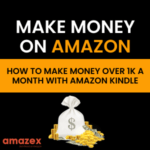How Does Wholesale Model Works?
Selling wholesale is just another way to grow a lucrative business as a seller on Amazon. In the wholesale model, the seller buys the products in bulk directly from the manufacturer at the wholesale price and then makes a profit by selling the products on Amazon. Under this model, you can be one of the many sellers selling the product on Amazon, or you can be the only and exclusive seller offering that specific product in the Amazon store.
Alike — But Different from — Retail Arbitrage
One of the biggest contradictions between the wholesale model and the retail arbitrage model is the investment of time required in inventory sourcing, along with the scalability of your business. Sellers using retail arbitrage make a significant investment of time when it comes to stocking inventory, whether they are shopping from online retailers or brick-and-mortar stores. With the wholesale model, the process of purchasing inventory directly from the manufacturer is often a quick process, and even replenishing inventory is faster and easier.
On the contrary, scalability in your retail budget can be a problem, as you are always limited by the availability of stock. The wholesale model does not offer the same limitation because there is a consistent and reliable source of stock replenishment. This means you can expand your business flexibly and quickly, and improve the amount of inventory you purchase as demand for the product grows.
Alike — But Different From — Private Labelling
The greatest similarity between the wholesale and private brand models is the reliability of inventory sourcing and the scalability that comes from clear sourcing from the manufacturer. However, the main difference between wholesaling and private label sales is the time to build up, with the amount and type of competition you will face once your product goes on sale. With the wholesale model, you already have a well-established customer base because you sell products from a well-known brand. This can significantly reduce the time it takes to boost your business on Amazon.
With private label products, you own the brand, which means the lead time can be long because it involves working with the manufacturer to develop, improve, or modify a product. Once the product is finally manufactured, you must grow a customer base from scratch because your brand will not be in the same way as conventional brands.
While the wholesale model may have a faster turnaround time than with a private label, you are seeing fiercer competition because you are not only competing with the customer but potentially competing with other sellers in a fight to win the cash box. buys. With private label products, you are the only seller offering that particular product, so you are only competing for the customer, never for the checkout.
The Benefits of Selling Wholesale
Selling wholesale on Amazon has multiple potential benefits, including:
Recognized Customer Base
As you are selling a product from a known brand, you can instantly benefit from the existing customer base that the brand has established. Customers already know about this product and this inline saves you the time and work of creating a listing from a scratch.
Reliable & Efficient Inventory Sourcing
With a wholesale model you can assure that if the product is produced by the manufacturer, you will be able to source it… not like with retail arbitrage where you are knuckled down due to the pricing practices of retailers.
Scalability
If an item is selling particularly well, you can quickly and easily enhance your inventory to keep up with customers’ demands.
Amazon Brand Approval
When you have brand approval to sell on Amazon you will see reduced buy box competition, and in some cases, this can consequence in exclusive selling rights on Amazon.
Lower Risk (in Some Ways)
A wholesale model is, in some ways, a less risky business model than retail arbitrage or private labeling. Since you aren’t the brand owner you don’t carry the risk, responsibility, and liability that comes with manufacturing a product and creating a brand. Instead, you are selling products that have proven reputations, and you can focus solely on the work of selling the product. What it boils down to is that a wholesale model has greater stability than a retail arbitrage model, and fewer moving pieces and potential pitfalls than private labeling.
The Challenges of Selling Wholesale
This gets harder and harder as selling on Amazon becomes so omnipresent.
High Order Quantities
The high order quantity that manufacturers need means you will not only need to make a significant upfront financial investment in inventory, but you will have to carry all the risk that comes with having high inventory levels on hand.
Wholesaling Best Practices
If you do decide to try out the wholesale model on Amazon, here are a few best practices to set you on the path to success.
Locate the Right Products
There are a few ways to go about finding products that may work well under a wholesale model on Amazon.
Tip 1: Go to Trade Shows
Trade shows give you a way to have face-to-face conversations very efficiently with brand owners and seek out new products that might just do well on Amazon. You can learn a lot about what these brands care about, their experiences selling on Amazon to date, any pain points, and what you can potentially bring to the table as a third-party seller.
Ultimately, trade shows give you the opportunity to learn about the brands you want to sell and quickly contact many important individuals within these businesses.
Tip 2: Research Using Brand Websites & Product Packaging
This method might not produce results as quickly as direct conversations at a trade show, but it can definitely work, particularly if you have a compelling and thoughtful sales pitch.
Tip 3: Look at Best Selling Products at Amazon
The good part about selling products that are best sellers on Amazon is that you know there is substantial customer demand. You only have to win buy box a percentage of the time to make money on best-selling products. When you are researching these products avoid products where pricing wars are widespread among sellers, because this will eat into your profits.
Smart inventory management practices will be your ticket to escaping costly storage fees from products that are sitting in Amazon’s warehouse.






